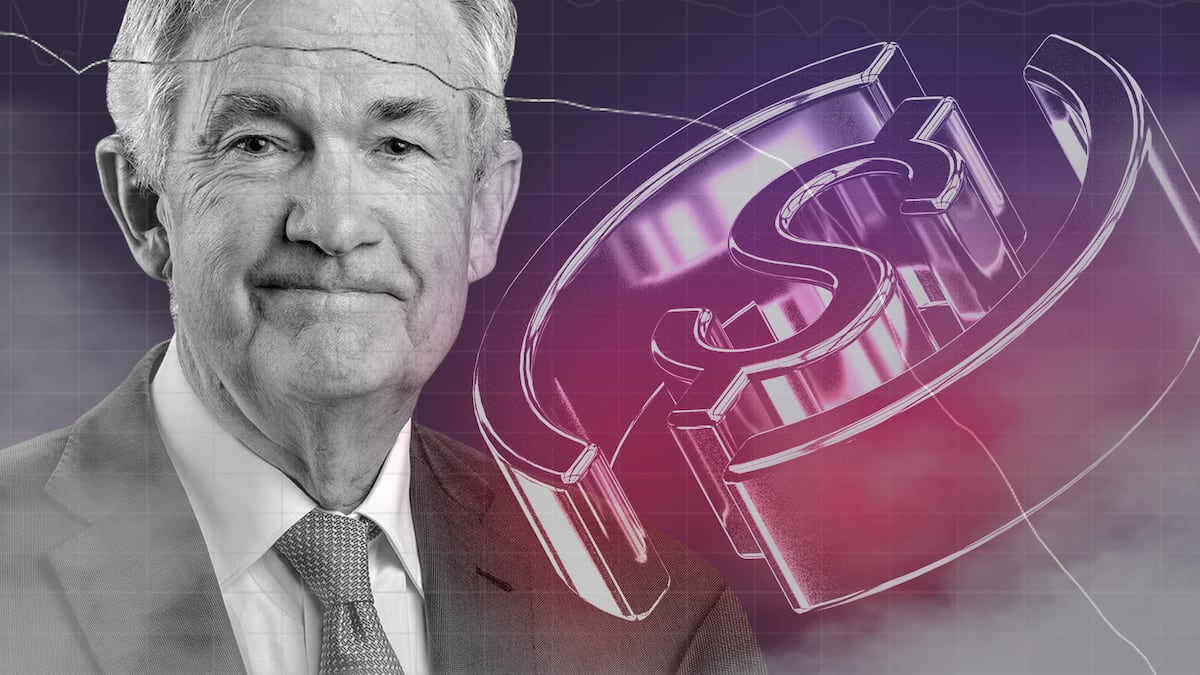- The slump in Circle's USDC can in part be explained by the higher yields offered on US government bonds.
- That’s driving USDC’s biggest holders to re-think keeping the stablecoin on their books.
- And it may get worse. USDC’s market cap could fall to $10 billion by the first quarter of 2024.
The US Federal Reserve’s quest to curb inflation by raising interest rates is having knock-on effects in the stablecoin market — and Circle’s USDC stablecoin is the biggest loser.
USDC’s supply peaked at $55.1 billion in June 2022. Since then, it has shed over $29 billion, or 41% of its market capitalisation.
The slump can in part be explained by the higher yields offered on US government bonds — currently around 5% on popular bond-based ETFs. That’s driving USDC’s biggest holders to re-think keeping the stablecoin on their books.
“Real rates in US Treasuries now provide a high opportunity cost for keeping capital within a 0% return asset such as USDC,” Guy Young, founder and CEO of stablecoin developer Ethena Labs, told DL News.
NOW READ: Aave stablecoin GHO struggles to hold dollar peg. ‘The focus on peg should come later,’ founder says
Most large US and European crypto investors prefer to hold Circle’s USDC over other stablecoins due to its perceived trustworthiness, compliance with regulations, and the transparency of its backing assets.
USDC to $10bn market cap
Bluechip, a nonprofit dedicated to evaluating stablecoin safety, recently gave USDC a B+ grade.
However, investors who prefer Circle’s stablecoin also have easy access to Treasury bonds. So as bond yields rose over the past year and a half, investors have cashed out USDC, causing its circulating supply to decline.
“Stables like USDC are more rate-sensitive, as holders can easily exit to US Treasuries,” Young said.
And it could get even worse.
Even after a 15 month downtrend, Jonathan Reiter, CEO of blockchain data platform ChainArgos, told DL News that USDC’s market cap could fall to $10 billion by the first quarter of 2024.
“This will become a problem in the not-so-far future,” he said.
Other stablecoins, such as Tether’s USDT — the biggest stablecoin, with a circulating supply of over $83 billion — aren’t suffering the same fate as bond yields rise.
Tether’s market cap grew since June of last year, from around $67 billion to $83 billion today.
According to Vaidya Pallasena, ratings director at Bluechip, Tether’s popularity in Asia has helped it evade an all-out investor exodus.
As opposed to their Western counterparts, investors in Asia do not have the same access to the risk-free yields offered by Treasuries, Pallasena said.
That, coupled with a strong demand for dollars in the region, has helped Tether’s USDT weather both competition from lucrative bond yields and negative sentiment during the crypto winter.
“It seems natural that stablecoin outflows from crypto would impact USDC more than USDT,” said Pallasena. “Users of the former would potentially be giving up 5% risk-free yields, whereas the latter group is limited by its ability to convert USDT to actual dollars in the bank.”
And it’s not just USDT’s popularity in Asia which is protecting it. It’s also the stablecoin of choice among many developing countries and those struggling with high levels of inflation, such as Lebanon.
DeFi can’t match bond yields
Even investors willing to take on the additional risk of using USDC in decentralised finance protocols are finding it difficult to match Treasury yields.
“The rates in DeFi are less competitive than US Treasuries — especially from a risk/reward standpoint,” Tom Wan, research analyst at 21.co, told DL News.
Depositing USDC on Aave can provide a 2.8% interest rate, while US Treasuries yield up to 5%, he said.
NOW READ: Stablecoin leapfrog of PayPal is a sign of crypto dominance outside the US
Wan also noted how the Circle stablecoin’s shrinking supply is impacting its use across DeFi, making it a less attractive option for investors.
Dune data compiled by 21shares shows that USDC dominance on decentralised exchanges declined from around 61% in March to 52% today. In comparison, Tether’s share increased from 27% to 36% in the same period.
Additionally, USDC liquidity in Curve Finance’s 3Pool — the most popular place to trade between stablecoins on Ethereum — sank from $2.1 billion to $70 million today — a 98% decline.
But Circle won’t let USDC go down without a fight.
NOW READ: Why Circle can’t shake SVB hangover as market cap plunges to two-year low
Last month, Circle CEO Jeremy Allaire announced that his company will soon launch USDC natively on six new blockchains, including Coinbase’s buzzy blockchain Base and Optimism. Ties between Circle and Coinbase have also strengthened, with the top US crypto exchange taking an equity stake in the stablecoin issuer.
According to Reiter, Coinbase’s move to offer yield on USDC deposits means holders have less incentive to cash out into Treasuries, and could be helping slow the decline. As of June 16, Coinbase customers could earn a 4% annual return on USDC deposits.
Pallasena, on the other hand, isn’t convinced anything Circle or Coinbase do will bear fruit — at least in the short term.
He said: “Aside from waiting for the crypto market sentiment to rebound, there’s very little Circle can do, in my opinion, to meaningfully improve its market cap.”
